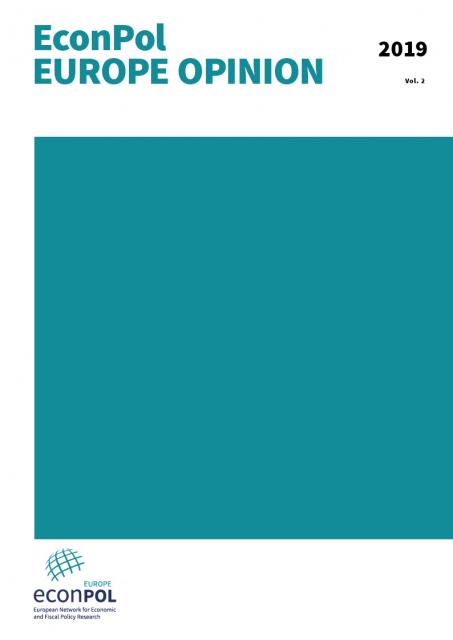
Intra-EU labour mobility: From too little to too much?
Freedom of movement of workers is one of the fundamental ‘four freedoms’ of the European Union and has been in force for decades. Economists have long considered that labour mobility is too low in EU. This is changing now as more and more EU citizens move to other Member States to work.
Two factors have driven the growth in intra-EU labour mobility.[1]
First, the two waves of the EU enlargement of 2004 and 2007 resulted in large flows from the New Member States (NMS) in Central and Eastern Europe to the ‘old’ EU-15. Large movements of people started in the aftermath of the first enlargement in 2004 and swelled even further around 2007 with the membership of Romania and Bulgaria. The United Kingdom and Ireland, which were the only countries among the EU-15 not to introduce the temporary controls, attracted disproportionally large inflows in the initial phase. Such large inflows may have contributed to the outcome of the 2016 Brexit referendum. More recently, Germany and other Northern Member States have become the main destinations for migrants from central and eastern EU countries.
These flows have persisted for a more than decade and seem to be driven by a combination of better working conditions and higher salaries in the industrial core of Europe. However, the rapid economic growth in most of the NMS has also led to narrowing of the wage differentials and most recent data suggest that the net outflows from some countries (e.g. the Baltic countries and Poland) are stopping.
Second, more recently, flows have increased from south to north in the euro area. These flows are, for the time being, much smaller than that of east-west and seems to be motivated mainly by growing differences in unemployment. This mobility seems to be exactly what is needed for a well-functioning monetary union, according to the theory of ‘Optimum Currency Area’: people move from areas of increasing unemployment to where the jobs are. Mobility acts as a stabilisation mechanism.
Overall, intra-EU mobility has increased strongly. Just under 4% of EU citizens of working age (20-64) now reside in another member state than that of their citizenship. This is approximately the double of the number at the beginning of the century. This average number, however, hides very large differences across countries. The proportions of own nationals of working age living abroad ranges from 1.0% in Germany to close to 20% in Romania.
Mobility has also become more contentious. In some receiving countries, the focus has been on the management of large inflows of foreign workers. This is particularly the case in countries where unemployment has been increasing and foreign workers are perceived as competitors to local workers. However, the economic benefits of mobility are rather straightforward in receiving countries. Mobile workers contribute considerably to the GDP of their host countries. Their total earnings are in some cases very large relative to the earnings of the remaining workforce in the origin country. In Romania, the wages earned by workers abroad is equivalent to about one half of the entire wages paid to workers who remained at home.
Labour mobility can also have negative effects for the sending countries.
One fear is that outflows of workers can lead to loss of productive human capital, i.e. brain drain. According to data, little difference exists between low and high-skilled outwards mobility rates in NMS. A priori, this suggests little evidence of an ongoing ‘brain drain’. Emigration rates from south to north within the euro area, by contrast, are more highly skewed towards the highly skilled. Brain circulation, namely highly educated leaving and arriving at the same time in a given country, appears a feature of richer northern EU Member States.
Another fear of sending countries is that large-scale emigration erodes the tax base, impairing the sustainability of public finances. The fiscal costs of a reduced labour force and a smaller tax base leading to lower income tax revenue can be substantial when a large fraction of the domestic labour force emigrates. However, a smaller population also implies expenditure savings, even more if some of the mobile workers would have been unemployed. Higher VAT revenues on domestic expenditure financed by remittances can also partially offset the loss of income tax revenues. Moreover, remittances can contribute to the domestic capital stock, thus facilitating higher productivity and wages, and, indirectly, higher tax revenues.
For countries with high debt levels, an ageing population, coupled with emigration, can worsen debt sustainability. In cases like Greece, large scale permanent emigration might exacerbate the problem.
For a long time, labour mobility in the EU appear insufficient. Over the last two decades, intra-EU has increased considerably. EU now faces the paradoxical situation that many complain that mobility is excessive. Concerns about low wage competition, welfare tourism and cultural homogeneity have become political issues in the receiving countries. But concerns have arisen also in the countries of emigration. According to the data, East-West migration has been largely beneficial, but large-scale emigration of educated workers from the South to the North might become detrimental to sending countries.
[1] We do not discuss immigration into the EU from third countries which has also increased, but is often not work related, e.g. asylum seekers.
Cinzia Alcidi and Daniel Gros: Intra-EU labour mobility: From too little to too much?, EconPol Opinion 17, May 2019.